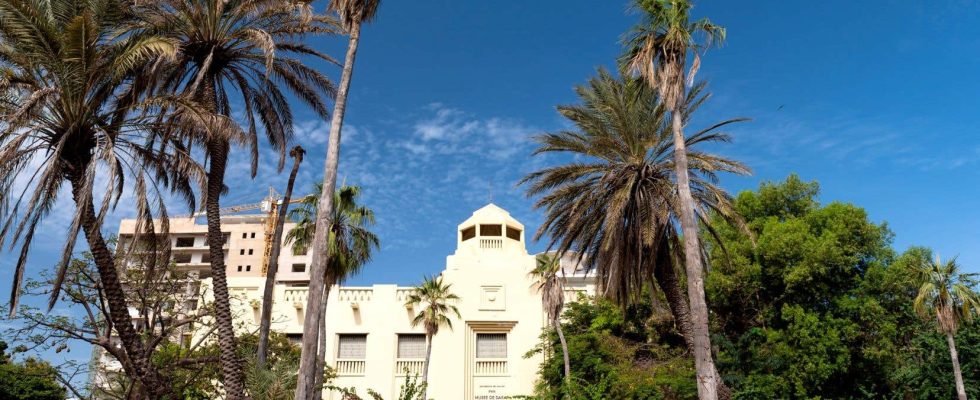This text is part of the special Pleasures notebook
Best known for its musicians, Senegal has many contemporary artists who are as inspired as they are committed. We took advantage of the twelfth edition of the Parcours event, at the end of 2023, to discover art in the city.
The work is intriguing. Giant matches, some blackened, are placed against a blue wall, and smaller ones, in boxes covered with patterns, portraits or photographs. In the back room of the Théodore Monod Museum of African Art IFAN, on the west cornice, the installation by Senegalese Mansour Ciss Kanakassy presented as part of Talking Objects Lab. Re-imagine the past is inspired by an African proverb: “Honor is like a match, to be used only once in life. »
Among the artist’s inspirations, Fatoumata Binetou Touré, cultural mediator, evokes the highly publicized departures of young people to Europe by canoe and the political upheavals of recent years – highly anticipated elections will also take place in February. “It’s as if African states are pushing young people to leave,” she says. They have the power to hold them back, but they don’t. […] My analysis: from the West, we see young people looking for hope elsewhere, while they are instead fleeing the despair of their country. »
Cultural scene in turmoil
In full turmoil, the world of Dakar arts can seem hermetic, seen from the outside. It must be said that the Senegalese capital cannot be tamed at first glance. Understanding its codes takes time.
As stunning as it is stimulating, the city can be visited with a certain letting go and a good dose of patience. Travel can be difficult. The emblematic express coaches, these colorful minibuses nicknamed “rolling coffins”, destined to disappear following the addition of new white and blue buses, still crisscross its lively neighborhoods. Experiencing it can take on the appearance of an expedition. The chaotic traffic, both in Dakar and in the rest of the country, also makes driving difficult for the uninitiated. Corruption being very present, the police do not hesitate to stop cars for a yes or a no.
The simplest, for a short stay, is undoubtedly to use a guide and a driver, and to group the visits by district. This is where a program like World Travelers’ Like a Friend comes in handy. To simplify research, the agency pairs us with a resident who knows the area that interests us well and who can put together a tailor-made itinerary.
From one gallery to another
Our guide, Sidiya Ba, is a well-connected cultural entrepreneur. A native of Dakar, he returned to live in the capital after university studies in France. We will stop at around fifteen galleries, museums and boutiques. The driver Omar Ka accompanies us.
The Plateau is one of the best neighborhoods to find pearls. “Within a radius of 10 km, there are around ten art galleries,” estimates Mr. Ba. Not far from the La Galette patisserie, the Quatuor Zerohuit gallery sports a simple logo near its door. Difficult to spot, the place looks like Ali Baba’s cave. You can purchase paintings by contemporary West African artists and creations by local designers.
Looking for the Hoop Galerie, you discover a restaurant at the back, and a shop with original souvenirs at a fixed price, unlike the stalls of the legendary Sandaga market, where bargaining is necessary. Inaugurated during the Partcours, the exhibition Obou Gbais Picnic continues until January 31. The theme is an opportunity to discover the colorful interpretation of the artist who lives between Abidjan and Berlin.
Art becoming more and more accessible
Cultural events have multiplied in Dakar in recent years. There are also more Senegalese artists making their mark on the international scene. The biennial of contemporary African art is one of the flagship events. Its fifteenth edition, Dak’Art 2024, which will combine painting, sculpture, design, street art, photography, video art, performance and installation, will take place from May 16 to June 16. This is undoubtedly one of the best ways to understand a culture so far from ours.
Part of the costs of this trip was paid by Voyageurs du monde, which had no right to review this text.
This content was produced by the Special Publications team at Duty, relating to marketing. The writing of the Duty did not take part.
